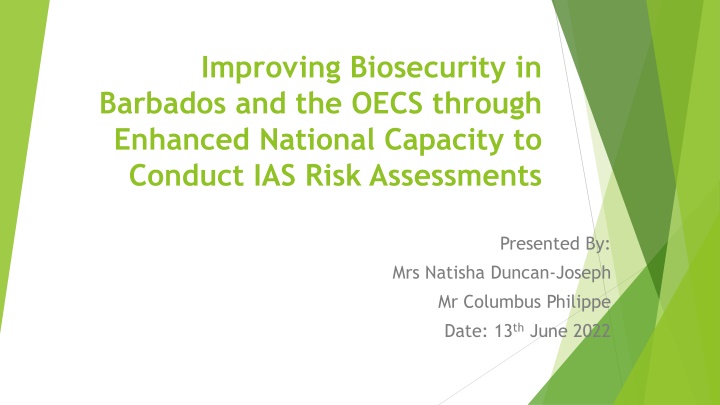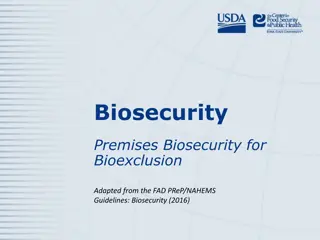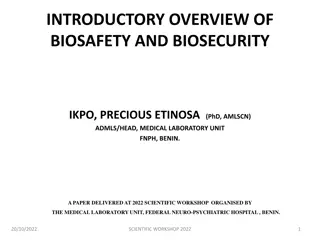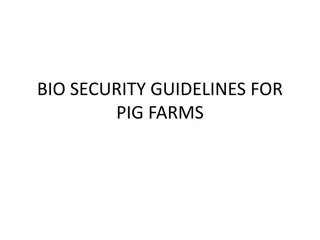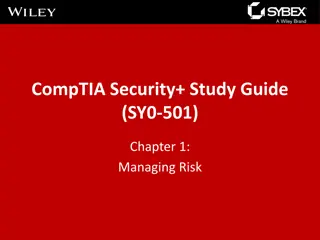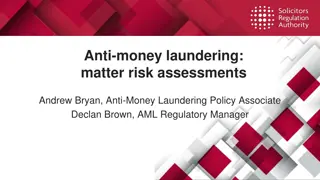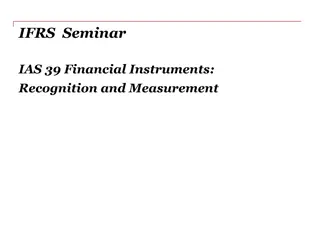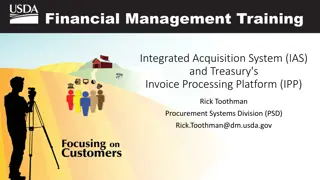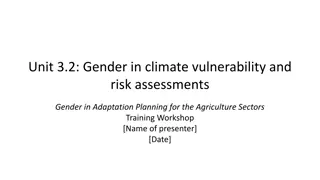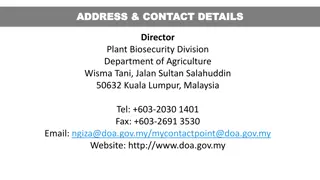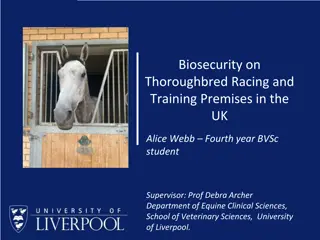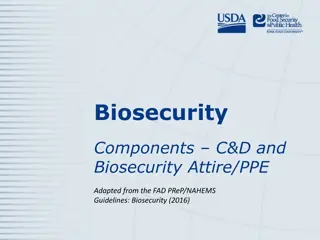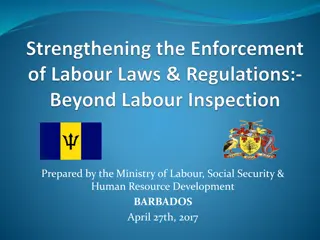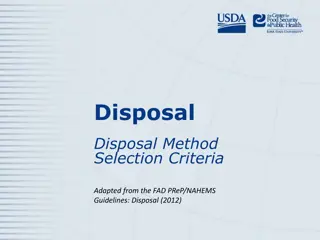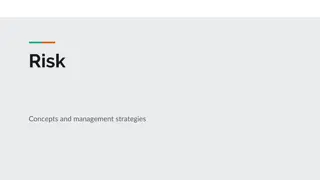Enhancing Biosecurity in Barbados and the OECS: National Capacity for IAS Risk Assessments
Mrs. Natisha Duncan-Joseph and Mr. Columbus Philippe presented on improving biosecurity in Barbados and the OECS through enhanced national capacity to conduct IAS risk assessments. The country report of St. Lucia highlighted the organizational outlook for biosecurity operations, including the merger of key government agencies for border protection. The importation process in St. Lucia involves application for import permits, with varying approval times based on the risk level of commodities. The use of CABI Compendium and Pest Risk Analysis is essential in determining import requirements and evaluating invasiveness of plant species.
Download Presentation

Please find below an Image/Link to download the presentation.
The content on the website is provided AS IS for your information and personal use only. It may not be sold, licensed, or shared on other websites without obtaining consent from the author.If you encounter any issues during the download, it is possible that the publisher has removed the file from their server.
You are allowed to download the files provided on this website for personal or commercial use, subject to the condition that they are used lawfully. All files are the property of their respective owners.
The content on the website is provided AS IS for your information and personal use only. It may not be sold, licensed, or shared on other websites without obtaining consent from the author.
E N D
Presentation Transcript
Improving Biosecurity in Barbados and the OECS through Enhanced National Capacity to Conduct IAS Risk Assessments Presented By: Mrs Natisha Duncan-Joseph Mr Columbus Philippe Date: 13thJune 2022
COUNTRY REPORT ST LUCIA
ORGANISATION OF BIOSECURITY The Ministry of Agriculture through the following divisions executes the functions of the island s biosecurity. Crop Protection and Quarantine Veterinary & Livestock Services Forestry Department (limited) Fisheries Department (limited) 1. 2. 3. 4.
ORGANIZATIONAL OUTLOOK There is an advanced initiative to merge key government agencies to form a single border protection agency. Customs Immigration Marine and Port Police Plant Quarantine Animal Quarantine Port Health
IMPORTATION PROCESS An application for an import permit to import any plant or plant related commodity or any live animal or product of animal origin and seafood products into Saint Lucia has to be completed and submitted by the customer.
IMPORTATION continued Application for commodities which are regularly imported and of low risk has a shorter time for approval to be granted. Commodities of higher risk has longer approval time since pest risk analysis has to be conducted to determine the outcome of the application.
IMPORTATION continued CABI Compendium is used as a guide to determine import requirement for new product or products that has not been imported for a long time It is also used to verify invasiveness of plant specie import request Distribution of pests of plants on the CABI website is also used to help
Imports Pest Risk Analysis exist for pests and diseases of plants, animals, and their products.
ST. LUCIA PORTS OF ENTRY G. F. L. Charles Airport Hewanora International Airport Castries Seaport Vieux-Fort Seaport Rodney Bay Marina Marigot Bay Soufriere Bay 1. 2. 3. 4. 5. 6. 7.
PORTS OF ENTRY continued With the increase in online shopping, courier service establishments have become a point of entry of regulated goods. Notwithstanding, import regulations must be applied.
Animal regulated diseases of Bovine Spongiform Encephalopathy (BSE) Rabies Avian Influenza (AI) Foot and Mouth Disease (FMD) Newcastle Hog Cholera African Swine Fever (ASF)
Plant regulated pest Fusarium wilt (TR4) Lethal yellowing Red palm weevil Citrus canker Moko disease Tuta absoluta Mexican fruit fly
EXPORTATION Persons who wish to export any plants, plant related commodities or animals, animal products and sea food from St. Lucia to any country has to meet the import requirements of that country. Commodities that are prohibited entry into any country is denied export.
EXPORTATION continued Documents required for export includes some of the following: Import permit Phytosanitary certificate Treatment certificate Health certificate Certificate of wholesomeness CITES certificate for items which are endangered
INSPECTION For casual imports, the customs department is our first line of defence. Any item that is of plant or animal origin is detained and an officer from the Plant Quarantine or Veterinary and Livestock Unit is informed.
INSPECTION continued Document for detained item is obtained if available and reviewed. Item is examined and if it meets the necessary conditions for import it is released for entry. If conditions are not what is regulated the item is confiscated for disposal.
INSPECTION continued For commercial imports, there is an established inspectorate which conducts inspections on imported meats, meat products, fruits, vegetables containerized and break bulk. These inspections are either at the ports or at the business premises.
SURVEILLANCE AND MONITORING There is an ongoing surveillance for fruit flies, tuta absoluta monitoring Active surveillance and monitoring for the amblyomma variegatum tick, and varora mite in bees. Receive bulletins, updates and alerts from international, regional organizations on outbreaks.
SURVEILLANCE Continued Establishment of the National Agricultural Diagnostic Facility (NADF) Animal Health Plant Health Feed Testing Soil Testing Standards
PUBLIC AWARENESS Public education is an ongoing activity which entails a series of events through out the year. Weekly television and radio programs Quarantine awareness month Don t Pack a Pest campaign which targets travelers.
INVASIVE SPECIES Invasive species of note which could have a negative impact on the country s biodiversity. The presence of the green iguana on island is worrisome. Likewise the sightings of Tufted Capuchin Monkey and Green Monkey troops in the wild.
Invasive species continue Indigenous St. Lucian Iguana Invasive Green Iguana
Two invasive plants on Gros Piton Wandering Jew Callisia fragans
Invasive species continue Threats of invasive species to the island include but not limited to Competition with indigenous species for food and habitat Agricultural pest Imbalance in the local ecosystem Loss of biodiversity
